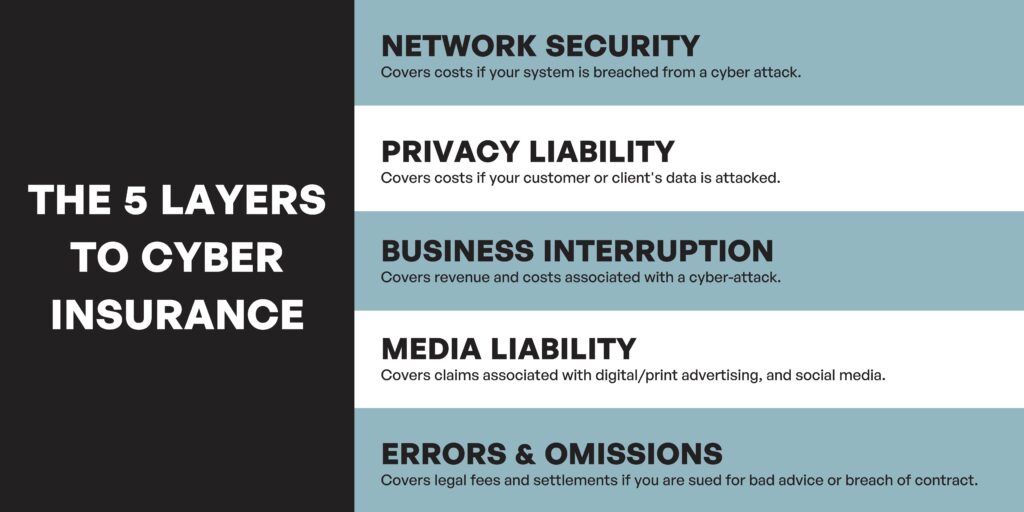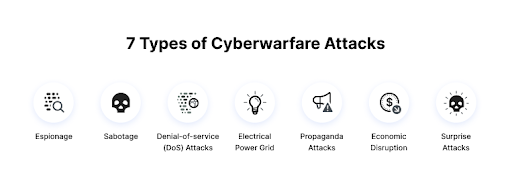The Essential Cyber Insurance Coverage Checklist

As cyber attacks become harder to avoid, cyber insurance becomes more necessary than ever—and more difficult to get. Businesses must secure adequate cyber insurance coverage to protect them against the reputational and financial consequences of attacks and breaches.
Last year, there was a surge in cyberattacks, impacting over 343 million individuals and organizations worldwide. Data breaches alone skyrocketed by 72% between 2021 and 2023, shattering previous records and underscoring the escalating risks businesses face.
Managed Service Providers (MSPs) and Managed Security Service Providers (MSSPs) swoop in to save their clients from this ongoing threat, but the role of an MSP/MSSP has become more complex and consultative in light of increasing regulatory pressure. MSPs/MSSPs must advise clients on how to meet compliance targets using tools, resources, and strategies like a cyber insurance coverage checklist, which benefits clients’ security posture and their position in the eyes of regulators and insurers.
What is a cyber insurance coverage checklist?
Cyber insurance helps organizations mitigate the financial losses and liabilities of cyber incidents. It can cover expenses related to data recovery, legal fees, customer notification, customer compensation, and even business interruption.
A cyber insurance coverage checklist is a process that helps MSPs/MSSPs and clients navigate the complexities of cyber insurance policies. It outlines the essential coverage areas to consider when selecting a policy and guides in managing cyber risks and ensuring adequate protection.
Why You Need a Cyber Insurance Coverage Checklist
Ensure Comprehensive Coverage
Insurance guidelines are getting stricter, making it more challenging (and expensive!) than ever for businesses to get comprehensive cyber coverage. A checklist helps organizations understand exactly which threats they need to protect against and how to meet insurers’ guidelines. For example, cyber insurance policy checklists can be aligned with risk assessment methods, incident response plans, and industry security frameworks like NIST and ISO 27001.
Avoid Under-insurance or Over-insurance
Without a checklist, MSPs/MSSPs and their clients may find themselves with inadequate protection or unnecessary expenses. A checklist helps you to choose the right coverage to match each unique risk profile and avoid stern words from insurance providers.
Facilitate Informed Discussions with Insurance Providers
A cyber insurance coverage checklist equips you and your clients with the knowledge to ask relevant questions and negotiate favorable terms with insurance providers. Doing so ensures that you understand the coverage required and can make informed decisions when comparing cyber insurance coverage options.
The Essential Cyber Insurance Coverage Checklist
Every cyber insurance coverage checklist should include the following ten areas of protection.
1. Data Breach Expenses
The expenses for investigating and responding to a data breach can be eye-wateringly high, which is why it is an essential component of any cyber insurance coverage checklist. The cost includes tasks like notifying affected individuals and offering credit monitoring services for victims, which can be covered through the right policy.
Get coverage:
Ensure you understand the cyber insurance policy’s data breach notification requirements, which detail exactly when you or your client needs to contact the relevant parties. If you fall outside this timeframe, the insurance may not cover you for a data breach after all, meaning your organization is at risk of high fines and fees.
2. Cyber Extortion and Ransomware
This coverage includes costs for handling extortion demands, ransom payments (if required), and recovery post-ransomware attacks. Unfortunately, the surge in ransomware attacks poses a growing threat capable of severely impacting business operations.
By including cyber extortion and ransomware protection in a cyber insurance coverage checklist, your client can ensure rapid recovery from attacks (with a little help from your MSP/MSSP, of course!), actively reducing downtime and operational interruptions.
Get coverage:
Verify that the policy includes the costs of negotiating with attackers, paying ransoms, and restoring data and systems
3. Business Interruption and Extra Expenses
This policy compensates for lost income and additional expenses incurred due to a cyber incident that disrupts your client’s business operations. Including it as part of the cyber insurance checklist guarantees financial resilience, both in the aftermath and during an incident.
Get coverage:
Check that the insurance policy includes a suitable restoration period for business interruption and covers additional costs, such as temporary office space or equipment rentals.
4. Network Security and Privacy Liability
The cyber insurance coverage checklist should protect against any legal liabilities and financial losses stemming from privacy breaches. For example, unauthorized access can result from external or internal bad actors, leading to data breaches or privacy violations.
Get coverage:
Keep in mind that your client may need additional coverage for regulatory fines and penalties related to privacy violations in their location, such as GDPR in the EU or CCPA in California.
5. Regulatory Fines and Penalties
Global data protection laws are becoming increasingly stringent, threatening high fines for non-compliance that should be covered in the cyber insurance policy:
- General Data Protection Regulation (GDPR), EU: Up to €20 million or 4% of the company’s annual global turnover, whichever is greater.
- California Consumer Privacy Act (CCPA), California: Up to $7,500 per violation for businesses and up to $15,000 per violation involving consumers under 16 years old.
- UK Data Protection Act 2018 (DPA 2018), UK: Up to £17.5 million or 4% of the company’s annual global turnover, whichever is greater (in line with GDPR).
- Lei Geral de Proteção de Dados Pessoais (LGPD), Brazil: Up to 2% of the company’s annual gross revenue in Brazil, capped at 50 million reais (approximately $9.5 million).
Get coverage:
If you’re unfamiliar with the regulations for each client’s industry and geography, it’s worth investing time in research or seeking third-party advice. This knowledge will inform the cyber insurance coverage checklist, and you can ensure the policy covers each specific regulation.
6. Reputational Harm and Media Liability
Your clients may need additional costs to rebuild their reputation, such as responding to negative media coverage following a cyber incident—these expenses should absolutely be included in any cyber checklist.
Get coverage:
Verify that the policy covers crisis communication, public relations, and legal expenses related to reputational harm.
7. Incident Response and Forensic Investigation
The right cyber insurance policy should cover the costs of forensic investigation, data recovery, and system restoration. After all, swift and effective incident response is crucial for minimizing the damage caused by a cyberattack.
Get coverage:
If your MSP/MSSP doesn’t already offer incident response services to clients, now’s your opportunity to do so. You can use the cyber insurance coverage checklist to show your clients how critical incident response is for compliance, security, and insurance purposes. Hence, they’ll see first-hand the value of your services.
8. Cyber Terrorism
While cyber terrorism may seem like a less likely occurrence than other attacks, such as internal threats and phishing, it is still a critical risk that must be covered by cyber insurance. Therefore, the checklist should include getting protection against losses resulting from cyberattacks perpetrated by terrorist organizations.
Get coverage:
Verify that the cyber insurance policy defines cyberterrorism clearly and covers a broad range of terrorist activities.
9. Social Engineering and Phishing Attacks
An insurance policy should provide a shield from financial losses caused by social engineering scams and phishing attacks, which trick employees into divulging sensitive information or transferring funds.
Get coverage:
Ensure the policy includes many social engineering tactics, including phishing, spear phishing, and business email compromise (BEC).
10. Third-Party Liability
In theory, a cyber insurance coverage checklist doesn’t cover one business. Rather, it’s like a spider’s web, addressing claims made by third parties (e.g., customers and partners) for damages resulting from a cyber incident originating from the insured company’s systems or network. Ultimately, this part of the policy explains that businesses can be liable for damages caused to others.
Get coverage:
Verify that the policy includes a broad range of third-party claims related to data breaches, privacy violations, and business interruption.
Tick Cyber Insurance Boxes With Cynomi
With the right cyber insurance coverage, guided by a comprehensive checklist, you can advise your clients on preparing for the unexpected. But if you have a large client base and limited resources, this can seem daunting. Thankfully, Cynomi’s AI-powered platform simplifies the process, acting as the bridge between your clients and cyber insurance expectations and requirements.
Cynomi’s automated policy creation and management features ensure your clients have up-to-date policies and procedures in place, further strengthening their insurance applications. The platform also offers actionable remediation plans to address identified issues, helping MSP/MSSPs continuously improve your clients’ cyber resilience and maintain insurability. With Cynomi, your MSP can scale up vCISO services while reducing operational costs, professional knowledge gaps, and churn.
Request a demo today to see why other MSPs leverage Cynomi to deliver unprecedented security and compliance to their clients.







